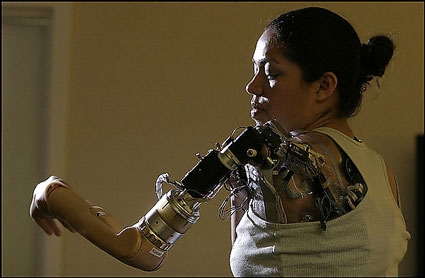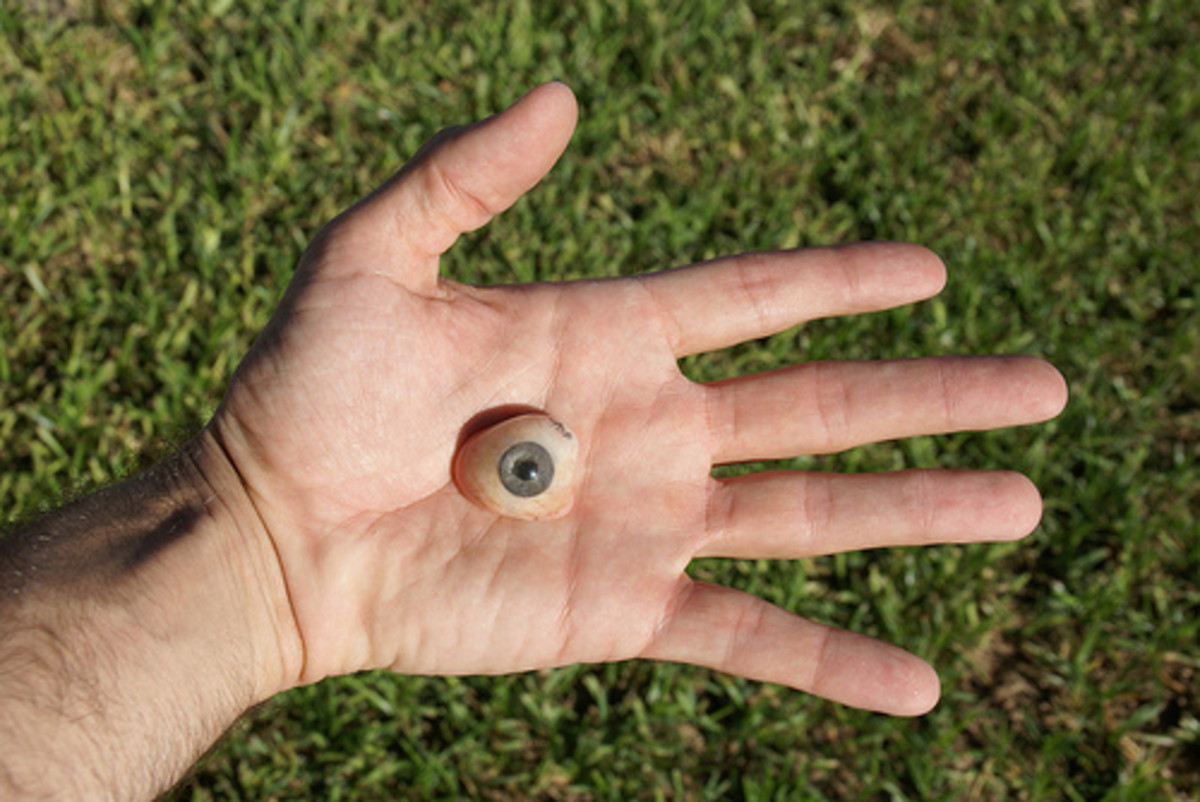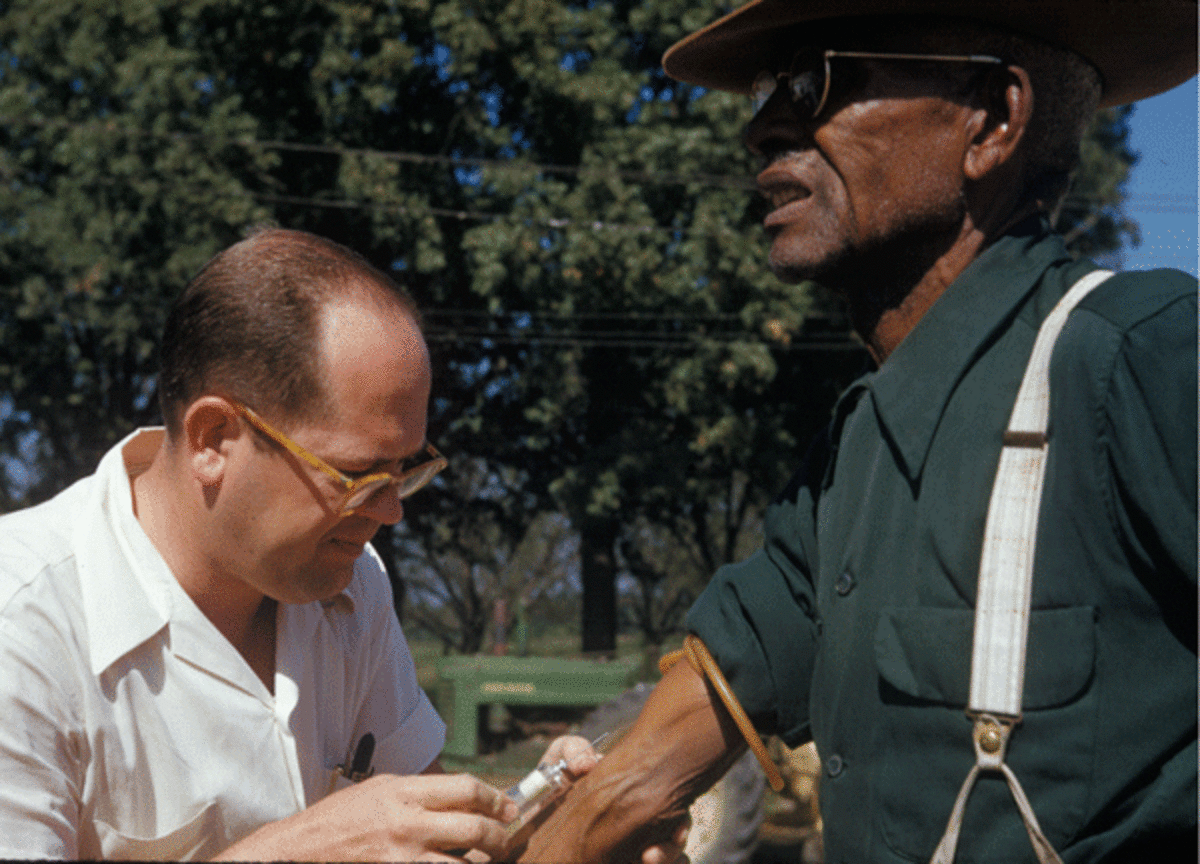Bionic Limbs for Amputees

"If you were able to do it before and you have the desire and the will to do it again, then the technology is there and we can make it happen..." - Brooks Raney
"The Six Million Dollar Man," "The Bionic Woman," artificial limbs controlled by human thought. Think these things can only be found in the pages and cellular frames of science fiction? Guess again. Recent prosthesis research has shown that the medical fantasies of yesteryear might just be the realities of today.
What Does "Bionic" Mean?
In general, "Bionics" is a form of technological engineering that draws its inspiration from those systems and processes found in nature. Some examples of bionics include the design of boat-hulls to imitate the thick, water-resistant skin of dolphins, and the sonar, radar, and ultrasound technology that mimics the echolocation used by bats. With advances in computer science, the technology used to create bionic limbs is a combination of artificial neurons and neural systems.
Looking to "Deer" Old Nature for Answers
Developed by researchers at the University College of London, scientists now have a way of attaching bionic limbs directly to the skeleton, which significantly lowers the risk of infection at the site where the skin is broken. The technique, called Intraosseous Transcutaneous Amputation Prosthesis (ITAP), involves securing a titanium rod directly into the bone; the metal implant passes through the skin and the artificial limb can be directly attached to it. This differs from current prosthesis, where the artificial limbs are fixed or strapped to an amputee's stump. ITAP reduces the chances of infection because the skin tissue meshes around the rod to form a seal against bacteria.
To figure out how to attach live tissue directly to metal rods, the scientists, led by Professor Gordon Blunn and Dr. Catherine Pendegrass, studied how deers' antlers can grow through the animals' skin without infection.
"You need a structure under the skin that will allow the dermal tissues to attach into the metal," said Dr Paul Unwin, managing director of Stanmore Implants Worldwide, a medical devices company that worked in collaboration with the scientists. "What we had seen in the deer antlers was that it is very much to do with the structure and shape of the bone, and the porosity of the bone. The tissue attaches in with long fibers, and it is like anchors attaching directly into it."
So far, early clinical trials involving a small group of patients who had lost fingers or thumbs have been very encouraging. The next stage, Unwin says, would be to carry out trials on upper and lower limb replacements, perhaps with the participation of the victims of last year's London bombings. He said he hopes that the technology for these procedures can be perfected within the next five years.
Mind over Matter
For those who rely on bionic arms, the process of muscle reinnervation is what makes them functional. First developed by Dr. Todd Kuiken, director of neuroengineering at the Center for Artificial Limbs at the Rehabilitation Institute of Chicago, the procedure involves grafting shoulder nerves to the pectoral muscle. The grafts receive thought-generated impulses, and the activity is sensed by electrodes within the muscle. The electrodes relay the signals to the arm's computer, which causes motors to move the elbow and hand. Hence, when amputee Jesse Sullivan thinks "Close hand," electrical signals sent through surgically re-routed nerves make it happen. Moreover, unlike typical artificial arms, there is no perceivable delay in motion.
"When I use the new prosthesis I just do things. I don't have to think about it," Sullivan says.
Gregory Clark, associate professor of bioengineering and a prosthetics researcher at the University of Utah, says that conventional prosthetic limbs are problematic because they "can do only one movement at any particular moment." However, Sullivan says his bionic arm allows him to rotate his upper arm, bend his elbow, rotate his wrist, and open and close his hand - in some instances simultaneously.
Other praise for bionic limbs comes from Mike Crabtree and John German, who possess a computer-controlled hydraulic knee and a bionic hand, respectively. Crabtree's titanium and high-strength aluminum limb is called a C-Leg, with "C" standing for computer. When Crabtree's technician, Charlie Crone, boots up the software that programs the leg, a series of beeps from a laptop proclaim that patient and doctor are "connected." Next, movement instructions are fed into the computer chip in the leg that controls the motor for the hydraulic knee. A sensor in the leg measures movements 50 times per second to adjust and guide it.
Crabtree said, "When you adjust the knee and you program it into the computer, you actually program it for my individual needs. You're not taking an off-the-shelf unit and saying, 'OK, amputee, here's what you are going to have and adjust yourself to it.' What this unit does is allow the prosthetic to adjust to you."
The C-Leg was approved by the Food and Drug Administration in 1999 and could help about 200,000 above-knee amputees in the United States.
For John German, a battery is used to power the i-Limb bionic hand, which has an opposable thumb and movable fingers and replaces older prosthetics, which only let users move their thumb and pointer fingers like a claw. Sensors and electrodes placed in the limb are lined up to match muscle points in what's left of the arm; when the muscles contract, the electrodes sense the impulses, and move the fingers.
The [Near] Future
The success of procedures like those performed on Sullivan, Crabtree, and German has prompted numerous organizations like the National Institutes of Health and the military's research-and-development wing, the Defense Advanced Research Projects Agency (DARPA), to support bionic research. Some 411 U.S. troops in Iraq and 37 in Afghanistan have had wounds that cost them at least one limb, the Army Medical Command says.
The biomedical industry can expect to see a big advance in technology in the next few years as the government spends about $35 million to develop artificial limbs in what the DARPA says is the largest pool of funding for prosthetics in at least a decade.
Even though this research is primarily driven by the desire to help combat veterans, most of the 1.2 million amputees living in the United States have lost limbs as the result of accidents and illnesses. Therefore, it's refreshing to see that last January, Medicare and the Department of Veterans Affairs approved payment plans for bionic limbs, like the C-Leg, for qualified applicants. So far, the C-Leg's manufacturer, Germany's Otto Bock Health Care, has sold about 1,500 C-Legs in the United States, and about 3,000 worldwide, and says that sales are doubling each year.
Some other bionic projects currently in development are an artificial retina that may be used to restore sight to the blind, and BrainGate, a program that decodes brain waves and translates them into computer commands.
Thanks to the staggering technological advances being made in the field of prosthesis, future amputees walking or running down the street will move with the same ease as everybody else. Now that's science fiction worth believing.









